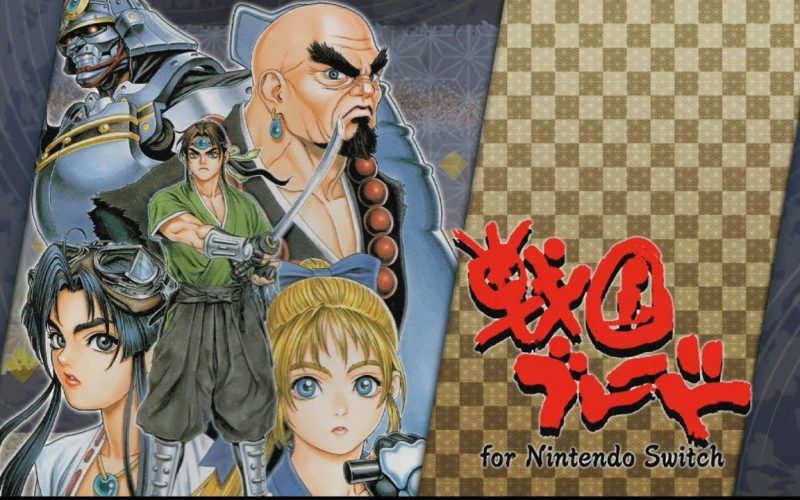It only took me 24 years to stumble upon Strikers 1945. While I’ve always loved to play shmups and even spent my very limited coins on the shmups arcades, Strikers 1845 is the one I wish I knew about sooner. In an alternate reality where my local arcade had Strikers 1945 instead of Varth, I would have taken it as my baseline of what a vertical shmup game should aspire to be.
If Strikers 1945 would have been my childhood defining vertical shmup, then Tengai would have taken the place of the horizontal shmup representative. Maybe not the baseline, because I love Darius so much it transcends universes*, but good enough to be one of the pillars.
Publisher: Zerodiv
Platform: Nintendo Switch
Release date: Mar 29, 2018
Price: $7.99
Tate: What?
Tengai is an horizontal shmup developed by Psikyo. The game takes place in the Sengoku period in Japan (a fantasy version of it, don’t want anyone searching for Tengai at the history books).
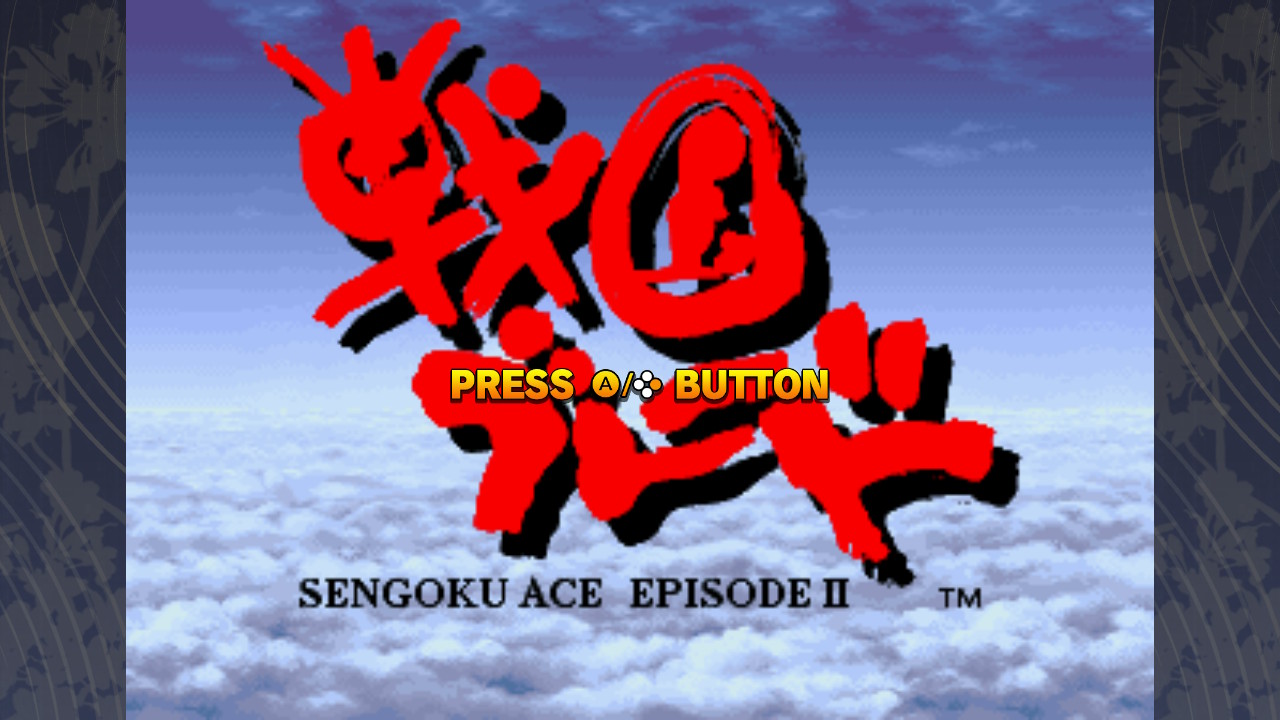
The Psikyo legacy
One of the things that became apparent while playing Tengai is that the Psikyo style is very distinctive. I won’t say I’m an adept of the Psikyo style, because we know that I’ve played a grand total of ONE other Psikyo game. And yet, diving into this game just felt very familiar.
It oozes that trademark style in both big and small ways. There’s huge gameplay implications like the style of the enemy formations or the randomized set of levels. Then there’s also finer details like not taking contact damage when colliding with an enemy ship. And then there’s the Psikyo thing of collecting currency at the right time for 2,000 points.
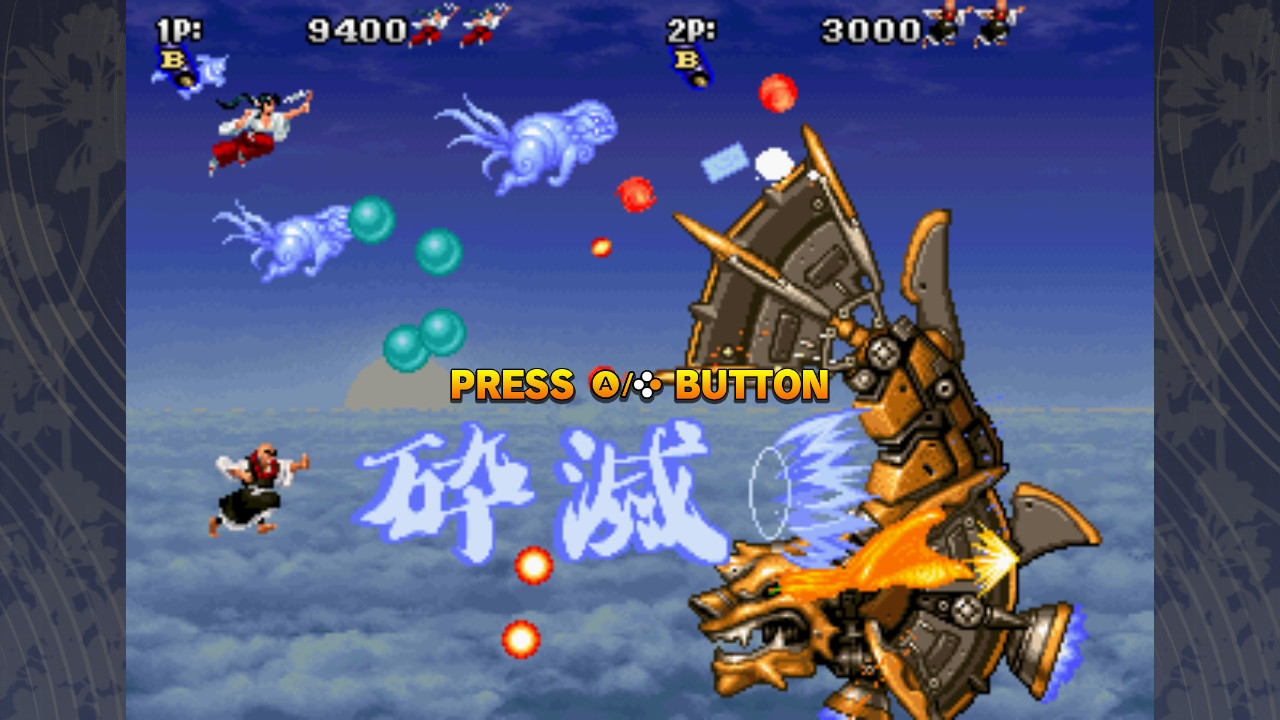
There’s also the masochistic second loop for the very best players.
Fighting for the princess
A beautiful thing about the 90’s is that everything was simpler in gaming. There are no convoluted scoring mechanics in Tengai. There isn’t resource management or secondary mechanics to employ. It’s just you and your skills.
So, what sort of basics does Tengai support? For starters, you can only shoot and bomb. You can charge your shots for a stronger secondary attack based on your power level, or you can opt to use the rapid fire button. Bombs are your typical high damage, high AoE nuke. Not all of them make you invincible, so watch out.
Hitbust
Tengai supports the traditional 8-way movement that most arcade games do. This is an old game, so don’t expect analogue movement or more than 8 directions. Ironically, it was during my Tengai playthrough that I discovered that I prefer to use the analog stick for maneuvering. It is a placebo effect similar to the one people experienced when playing Mario 64 DS on the 3DS and believed the circle pad actually expanded their movement options.
The one thing that felt wonky at first was how huge my character was. In a world where most shmups feature airships, having a person immediately threw me into the unknown. I think that after 18 reviews, everybody knows that I like to know what’s my hitbox, so having a fully grown adult flying around certainly didn’t help.
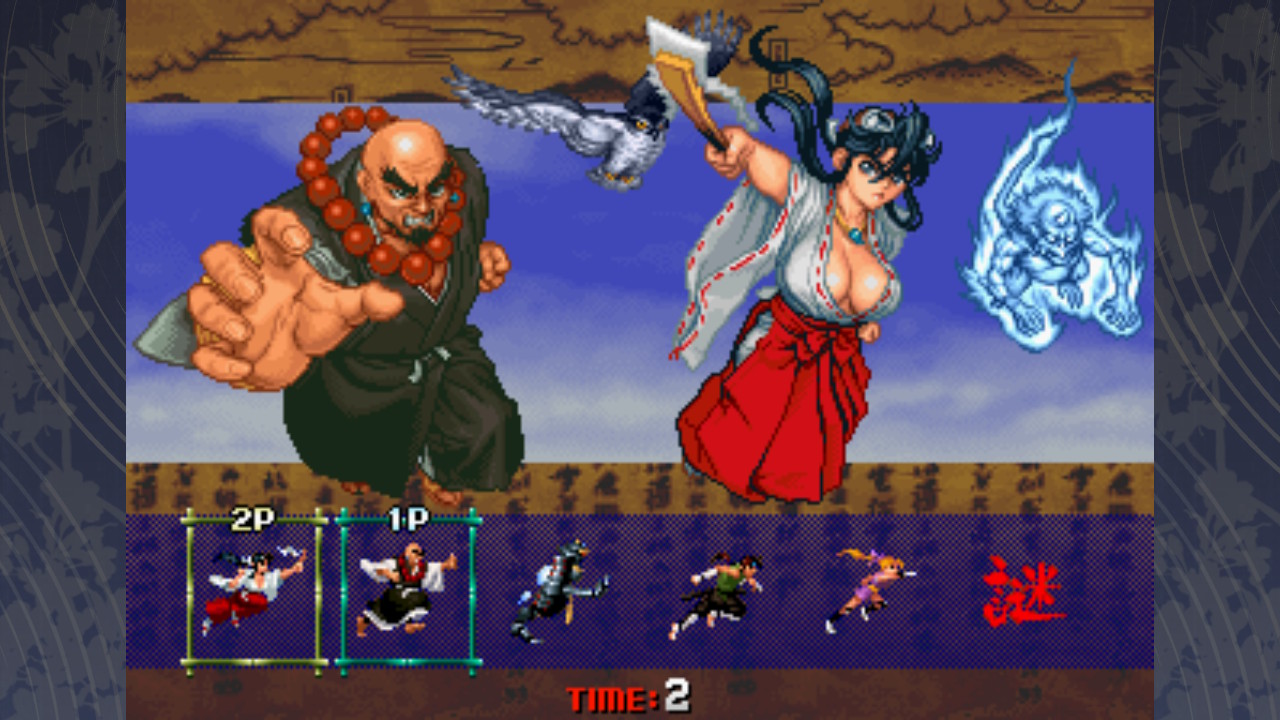
Through experience and multiple playthroughs, I noticed that I wasn’t getting hit on the legs. It was during stage 4 when playing Miko that the claw mentioned how he “wanted to cut her bust and frame it” that gave me the revelation I needed! Your hitbox is the center of the chest area of whichever character you are using.
Magic and robots
As if feudal Japan wasn’t crazy enough already, Tengai decided to throw robots into the mix. It’s kind of funny to think about how you can be a flying 50+ year old monk fighting some dudes in bigger robots of themselves.
I don’t think I’ve mentioned how Tengai drives the narrative yet. The game’s story is told through character specific one liners which are shown after a successful mission. Despite the first 3 levels being randomized, their dialogue is always the same and unrelated to the current level. I’m not gonna lie, I find this both to be a relief and a disappointment. On one hand, I don’t have to play multiple times until the RNG gods bless me with seeing all the levels to fully capture the story. On the other hand, the dialogue can come out as generic and out of touch with what just happened.
Branching out
The first half of the game is comprised of stages chosen at a random order from a pool of stages. The order in which you get them is quite relevant, as the game will get progressively more difficult. If you are looking to not die, then going after the stages that give you the most trouble first is the way to go. Despite being randomly chosen, you can in fact choose the order by pressing Y at the title screen.
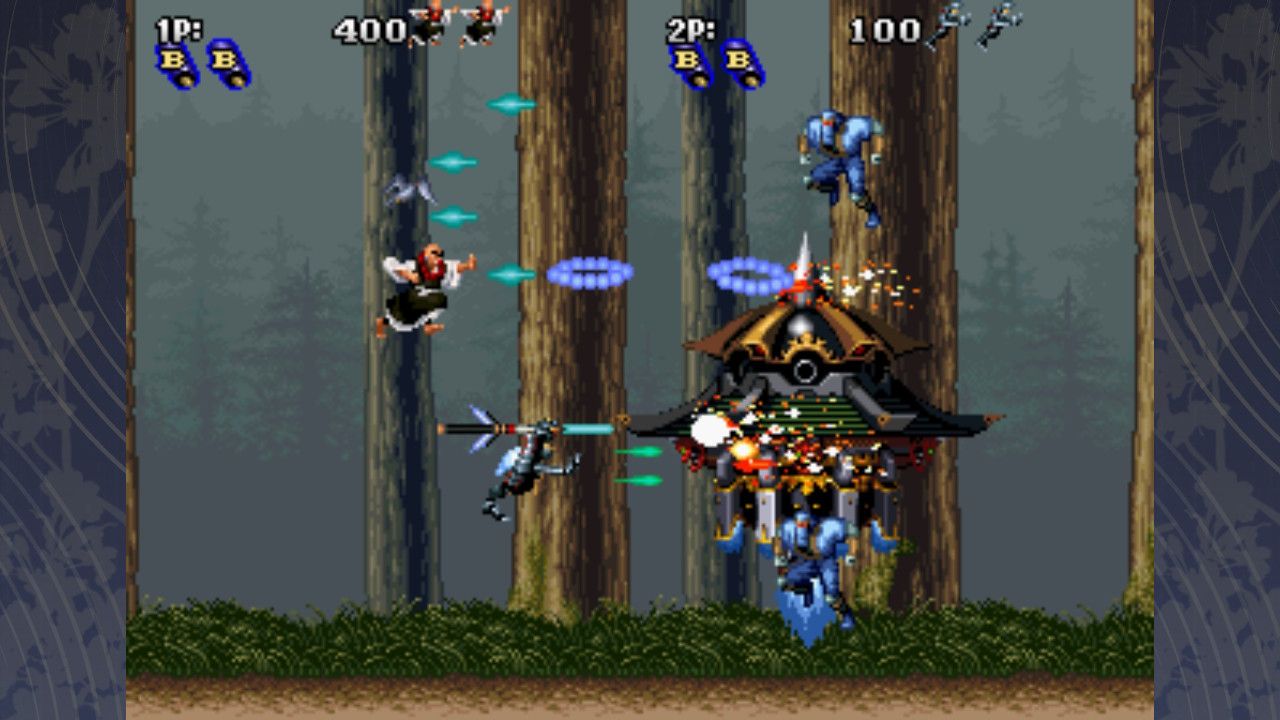
The most welcome surprise came during one of the last levels. There’s a point where you are given a choice of taking a stage from the front gate or through a side entrance. Depending on your choice, you will get an entirely different level and also a different ending. I encourage everyone to check out all the endings, as some of them are pretty hilarious.
Additionally, if you go through the second loop, you will automatically take the choice you didn’t take during your first loop. Unfortunately, the second loop is completely devoid of dialogue and story.
Downhill snowball
With old school shmups there’s one of my biggest pet peeves: losing power-ups on death. I won’t single this out on Tengai, or Psikyo for that matter. Simply put, losing the entirety of your power-ups on death is a snowball effect of failure. I’m sure you recognize the all too familiar scenario of dying, only to die again chasing after your fallen power-ups.
The alternative is to be patient and wait for them to fly back to you. While doing this, you will discover that Tengai’s horizontal “bounce” hitbox for the power-ups is somewhere close to 1/3 of the screen. So yeah, you HAVE to put yourself in danger to recover your power-ups.
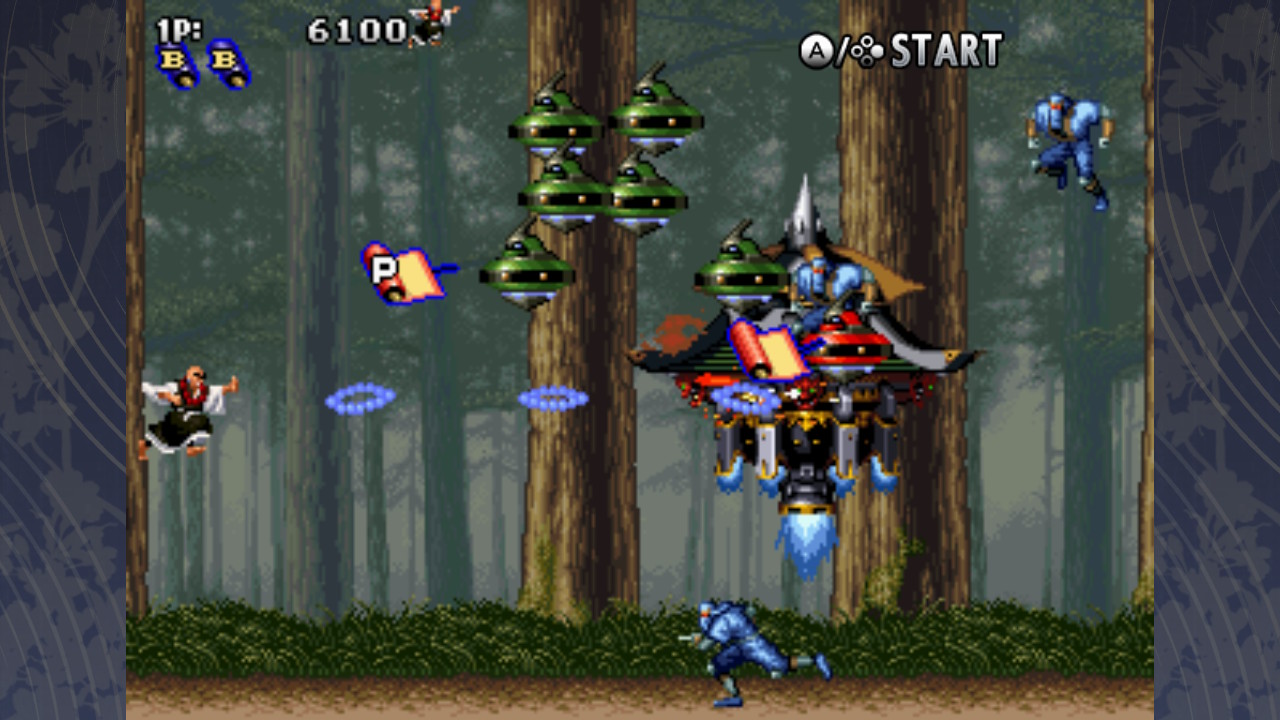
By itself it isn’t too bad, but then there’s the element of control. There are certain shmups in which the difficulty lies intertwined with your ability to control who is shooting on screen. Let too many enemies fire, and it can be literally impossible to avoid the bullets.
Tengai is one of such games unfortunately. This means that losing your power-ups means losing control, and depending on your difficulty you may not even bounce back unless you empty your bombs (and you better be using an invincible bomber character). As a side note, it is hell to try and recover during the second loop. Simply put, if you die, you might as well not decide to continue unless you have infinite continues.
arcade goodness
I don’t need to draw attention to the fact that Tengai is absolutely beautiful. You can see from the screenshots that the style and enemy design is top notch. Special attention has also been placed on every other aspect as well. The backgrounds have a very pleasant parallax effect. The sound effects are very rewarding. And for some reason, every voice line seems to be shouted like “POWER UP” or the bomb chants. It produces that familiar arcade echo that is a joy to listen.
1CC friendly
I know this may sound weird with a Psikyo game, also known as some of the OG bullet hells, but I consider Tengai to be very simple to beat with a single credit.
After spending a lot of time, I realized that the game plan to not die is actually pretty simple. The bullet patterns aren’t particularly complex on the first loop. Your hitbox is also very fair once you know where it actually is. With that being said, the requirement for the 1CC is only to know how to manage your bombs. Bombs are incredibly destructive, so they are very viable to obliterate a phase of most bosses. Also to recognize the enemies with fast straight shots, namely the red/blue samurai archers, to know when to get out of the way.
If you know which enemies drop bomb pickups, and stay mindful of how many you can use per level, you should be good. I do recommend that you pick a character whose bomb actually makes it invincible. Tengai would be a good pick, Miko wouldn’t.
Guest appearances
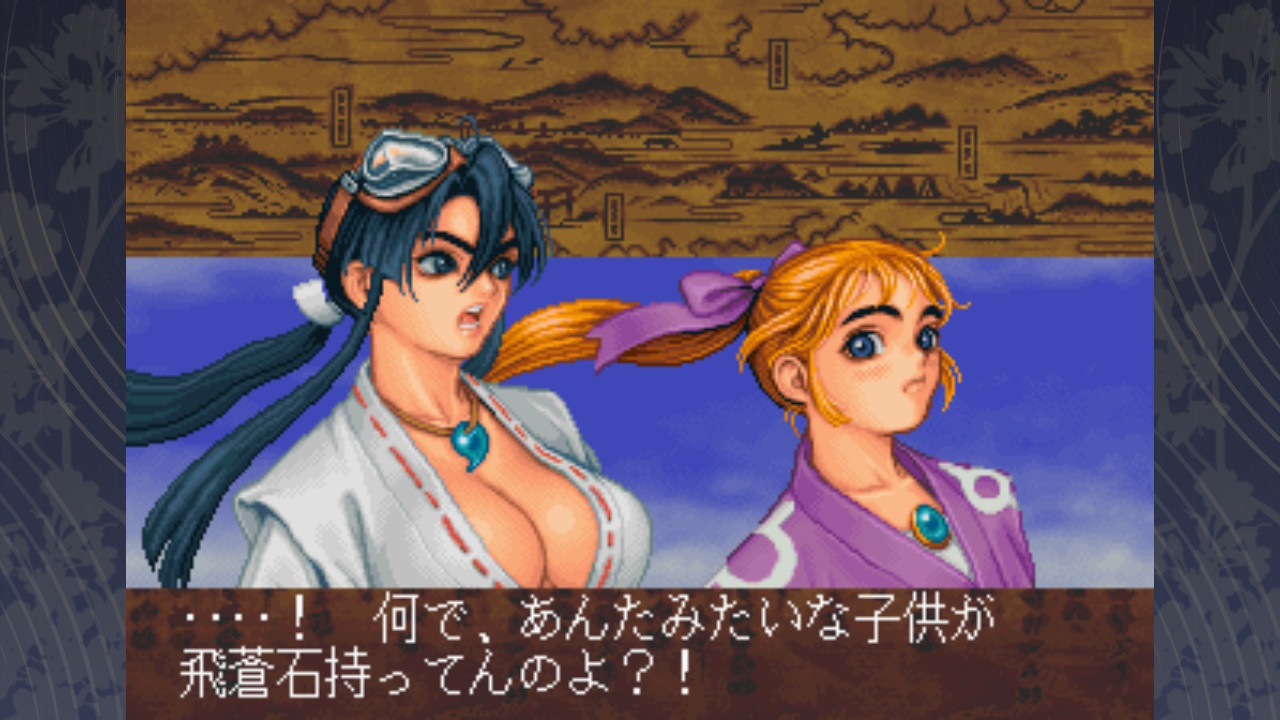
Did I also mention that Maisie Williams (Arya Stark from Game of Thrones) makes a special cameo appearance as Junis? I was blown away too! I’m pretty sure this game is older than her, so Psikyo was certainly on top of what would be popular in the future!
Disclaimer: This is just a joke, I don’t actually believe this is anything other than a fun coincidence… or do I?
Credits roll
Despite spending a lot of time pointing out the similarities with Strikers 1945, I think Tengai is easily a much better game. The feudal setting of the game allowed it to go nuts with the art style and direction, whilst retaining top notch gameplay. The gameplay is incredibly fun and fluid. It strikes that much needed balance between being challenging without feeling oppressive. Losing your power-ups is a nightmare, but that was par for the course in the 90’s, and I don’t think it takes away from the game as much as I made it out to be.
With an extremely affordable price and a very low install size, I find Tengai to be an absolute must-buy for anyway who enjoys old school arcade shmups!
The ranking so far:
- Ikaruga
- Psyvariar Delta
- Devil Engine
- Rolling Gunner
- Tengai
- Steredenn: Binary Stars
- Stardust Galaxy Warriors: Stellar Climax
- Sky Force: Reloaded
- Strikers 1945
- Black Paradox
- R-Type Dimensions EX
- Shikhondo – Soul Eater
- Ghost Blade HD
- AngerForce: Reloaded
- Aero Fighters 2 (ACA Neogeo)
- Lightening Force: Quest for the darkstar (Sega Ages)
- Pawarumi
- Switch ‘N’ Shoot
- Last Resort (ACA Neogeo)
* Please give us the Dariusburst already!!

